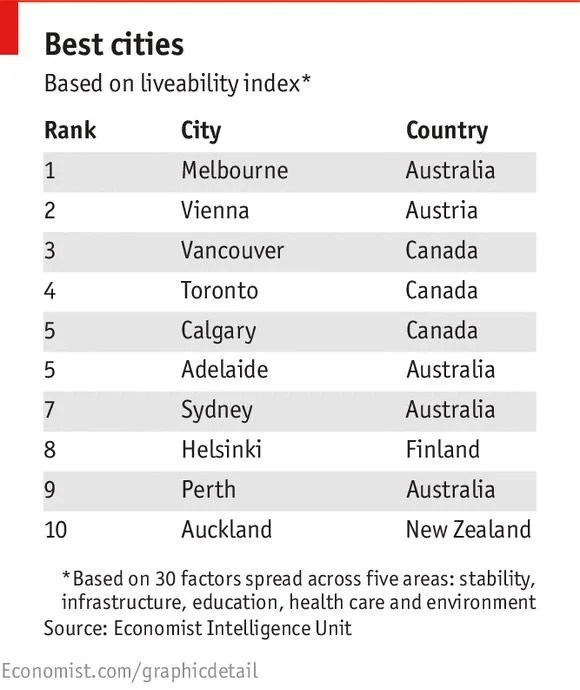Times are tough for livability these days. “Since 2009 average liveability across the world has fallen by 0.7 percent, led by a 1.3 percent fall in the score for stability and safety”, declares The Economist Intelligence Unit’s 2014 Liveability Report, with a hint of a doomsday scowl. War in the Ukraine and Syria has been a leading culprit of un-livability, along with the financial crisis in Greece. Average quality of life worldwide hovers at a 75.33 out of 100. That’s a solid C. We can expect a parent-teacher conference soon, at that rate.
But who decides how “livable” a city is, and just how accurate can they possibly be? There are actually three big names in livability ratings: the aforementioned EIU, Monocle magazine and Mercer. They all use a variety of quantified criteria, weighted and scored; for example, the EIU scores multiple sections in the categories of Stability (weighted 25 percent), Healthcare (20 percent), Culture & Environment (25 percent), Education (10 percent) and Infrastructure (20 percent). There are obvious issues with quantifying these nebulous realities, be they as simple as personal judgement (why should healthcare matter for twice the amount of education, or ignore cost of living entirely?) or more complicated (as The New York Times has argued, “The Economist clearly equates livability with speaking English”; Forbes points out that there is but one truly cosmopolitan city — Tokyo, near the top of the lists).
These qualms can also be pointed at who the livability reports are aimed at: businesses and businesspeople, who use them to compute hardship allowances for job relocation. They also make for great headlines. Check out some of the “Best Places to Live in America” lists and you’ll get the gist. Madison sure looks nice, but who’s seriously considering packing up and moving to Wisconsin?
EIU’s Most Liveable Cities, 2014

In spite of these qualms and the question of what these scores actually stand for, one city that’s made the top ten in 2014 is using its laurels as a catalyst for actual, tangible change.
